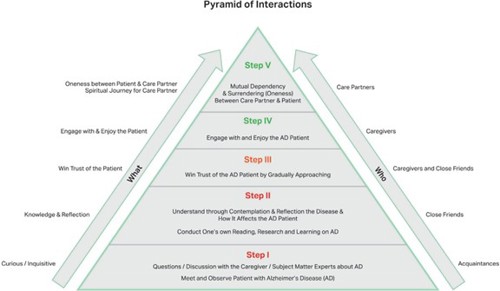Friday, July 21, 2017—5:10 pm 84˚F (30˚C)—Overcast with rain forecast
Being a full-time care partner to Sumi required becoming a partner in her non- pharmacological treatment. To provide this type of caregiving, I recognized that I needed to change myself.
As a full-time care partner, I am building a new relationship with Sumi on the foundation of the old one; a relationship based on emotional bonds that are “mutually dependent.” Mutual dependency means both partners need each other; they can’t live without each other. Sumi needs me by her side as much as I need her and what she brings to the relationship. I imagine it as a relationship akin to a mother and her newborn child.
The relationship becomes what is called Yin and Yang as both partners’ needs and what they bring to each other are intertwined, complementary and balancing forces rather than opposing. When Sumi was first diagnosed about four years ago, our relationship was inter-dependent. But now, as her disease has progressed and planned exchanges are becoming difficult, or rare, our mutual dependency has increased.
All I have done at this stage is to give myself up to Sumi’s needs. The amazing thing is that many times Sumi, in her own way, reciprocates by figuring out how to make me feel better. Parini saw this firsthand during her visit this week when the three of us were sitting in our backyard.
Sumi and I sat on the swing and Parini on a chair across from us. Sumi was smiling and cuddling me with her arm around the back of my shoulder. Or sometimes, when I sneeze, Sumi will hold my hand to show her concern. This empathy Sumi shows me must be hardwired in her brain where the need to care for others is still alive.
I do maintain my independence and do things for myself to keep my sense of well-being, but there are moments when I feel that my mutual dependency is almost bordering on
“surrender to Sumi.”
To illustrate this concept, I created a five-step model of how I have observed different people connect with Sumi, a person with a disease.

Step I: Short-term or one-time engagement with the person with the disease
Many acquaintances visit us as they are curious and inquisitive. They ask questions about Sumi’s disease and their understanding is based on what I may have said on that day.
Step II: More frequent engagement with the person with the disease
These are close friends who want to a gain deeper knowledge by having meaningful discussions with me and then doing their own reading and research for better understanding of the disease.
Step III: Win trust of the person with the disease
Caregivers and a few close friends and relatives will interact with Sumi, the person with the disease, and establish a bond by speaking to her or touching her. In the process, they are winning her trust.
Step IV: Engagement and enjoyment of the person with the disease
Hired caregivers fall in this category. They are professionals who know how to engage with the person with the disease and help them perform their activities of daily living (ADLs). Professional caregivers have knowledge, skill and experience to understand what Alzheimer’s does to a person. They know how to see things from a diseased person’s perspectives. They enter into that person’s life.
Step V: Mutual dependency / surrendering by care partner to the person with the disease
At this step, a family caregiver, spouse, parent or sibling is the primary person looking after the person with the disease. If their relationship before the disease is very robust, a strong bond may exist between the caregiver and the person with Alzheimer’s and they may become mutually dependent. At that point, the relationship becomes a “oneness” where the caregiver’s abiding commitment to the person in their care borders on emotional surrendering. This emotional surrendering is not passive, however. It is an active mind-set where the caregiver maintains his or her own identity while maintaining a strong, almost spiritual connection to the person with Alzheimer’s. He does not sacrifice his self-care needs and strives to find creative problem-solving solutions for the person’s safety and well-being.
